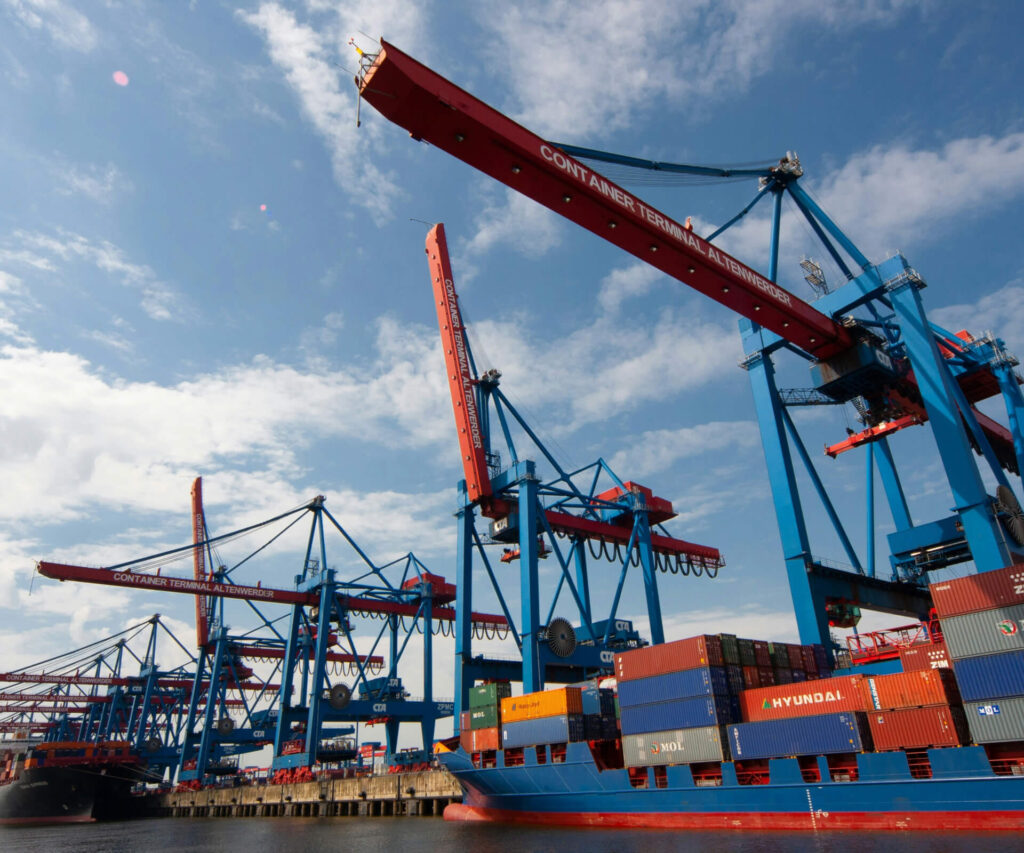Communications is key to capitalizing on trade finance opportunity as Trump tariffs loom

By Ted Harvey, deputy head of Capital Markets
A Trump tale
Just weeks into his second tenure in the Oval Office, Donald Trump has pushed forward with his tariff agenda – and his actions are causing quite a stir in markets.
So far, the US President has threatened to impose 25% tariffs on imports from Mexico and Canada, a 10% levy on Canadian energy, and tariffs of 10% on imports from China. Even the EU and the UK are said to be in his crosshairs.
Markets witnessed a sharp sell-off last week in response. And while his move to delay tariffs on Mexico and Canada saw them rebound somewhat, the potential for a lengthy trade war remains as real as ever – particularly given China has retaliated with a 10-15% levy on certain American goods.
When widespread tariffs loom, the media spotlight tends to fix on how they might impact economic growth, market volatility and currency fluctuations. These factors are, after all, key indicators of financial stability and investor sentiment.
But what is often overlooked is the impact tariffs could have on trade finance. This presents experts in the area with a stellar opportunity – but only if they can communicate the importance of the subject effectively.
Tariffs and trade finance
Trade finance refers to the financial products and services companies use to facilitate international trade, enabling them to manage risks, bridge cash flow gaps, and generally ensure smooth cross-border transactions. It is an essential yet increasingly complex facet of global trade, perhaps taken for granted during more benign trade environments.
Trump’s tariffs – along with a host of wider structural themes – may leave a lasting impact on how businesses secure trade finance. Journalists covering this part of the market are mindful of this to some degree, but it is up to the firms with expertise in the area to help communicate the urgency and real-world impact of the situation.
Doing so will see trade finance-related stories gain greater prominence, providing more awareness for those with a perspective.
Hot off the press
Ongoing conversations with our press contacts indicate editors are eager to unpack the following trade finance themes in the coming months:
- Trade war stories: if Trump’s tariff threats do materialize, what will the implications be for US businesses with regards their trade finance operations? What about international firms? According to a recent Allianz analysis, evidence from Trump’s first term in office suggests tariffs actually didn’t hinder growing trade finance volumes – why was this? Could it be different this time around?
- Growing pains: the global trade finance market was forecast to surpass $21tn by 2033, with an annual growth rate of 7.83%. What is driving the sector’s exceptional growth trajectory, and could elevated tariff activity threaten to derail its progress?
- Beware the watchdog: Many bankers are preparing for Basel 4 in the EU on January 1 2025, known as Basel 3 ‘endgame’ in the US and Basel 3.1 in the UK. Journalists will be keen to understand how the implementation of Basel will impact the trade finance sector. Specifically, how might it affect capital requirements, risk assessments, and the availability of trade finance products? What other regulations are in the pipeline that could disrupt the sector over the coming 12 months? Will Trump’s promises to slash red tape materialize?
- Dare to digitalize: While digital technologies like blockchain and AI have greatly accelerated transaction processing, nearly 60% of global trade documentation remains paper based. This is despite trade digitalization solutions demonstrating a more than 25% reduction in errors and compliance issues during pilot programs. How much trade finance digitalization is in store over the coming years? Should firms prioritize greater digitalization before tariffs are introduced?
Building trust
At an uncertain but exciting moment for the trade finance industry, demonstrating extensive expertise of the space’s dynamics – whether by engaging with journalists or crafting compelling content – could prove essential in elevating your firm’s visibility in an increasingly crowded market. And this is merely one advantage.
Another, and perhaps the most important, centers around the establishment of trust. As companies of all shapes and sizes rethink their cross-border operations over the coming months, firms will ultimately choose to work with the trade finance specialists they perceive as the most trustworthy, well-informed and innovative. This is especially the case amid tariff tumult. To put it simply, cultivating a reputation for trust through regular and insightful communications could put your firm in the strongest position to lead the conversation – and the market – going forward.
Key Takeaways:
1. How could Trump’s tariffs impact trade finance?
Tariffs may increase costs, disrupt supply chains, and heighten regulatory scrutiny, making effective trade finance strategies more critical than ever.
2. What are the biggest challenges facing trade finance today?
Regulatory changes (Basel 4), digitalization gaps, and trade wars all pose challenges, requiring firms to adapt quickly.
3. How can firms stay ahead in trade finance amid uncertainty?
By leveraging digitalization, staying informed on regulatory shifts, and maintaining strong media engagement to position themselves as industry leaders.
About the author:
Ted Harvey is the deputy head of Capital Markets at Aspectus Group, where he helps shape the narrative for financial thought leaders and market influencers. Prior to joining Aspectus, he honed his expertise at Barret and Cook stockbrokers.

